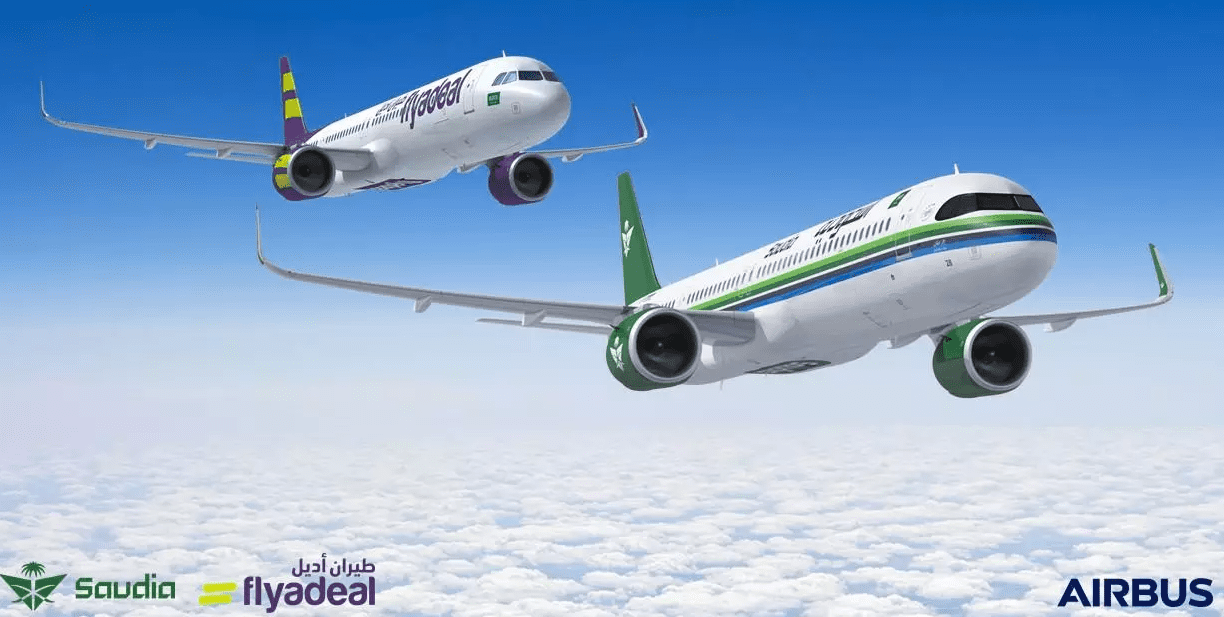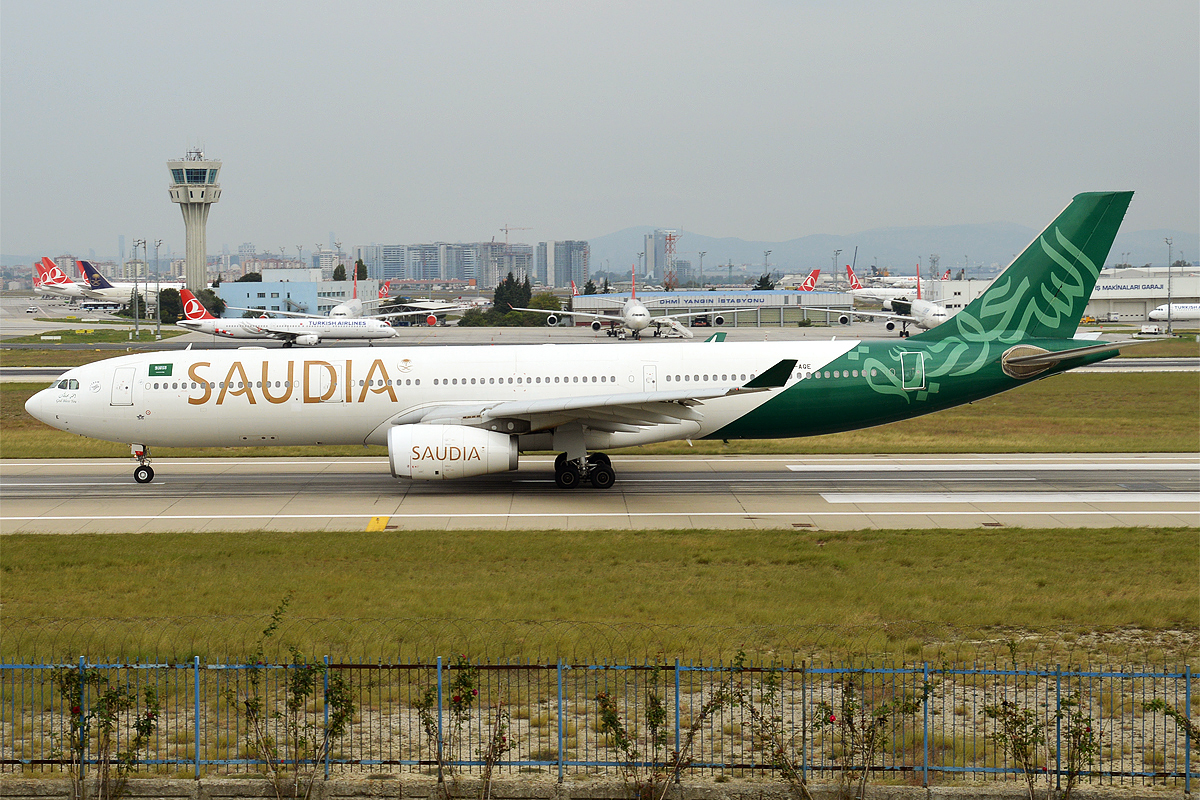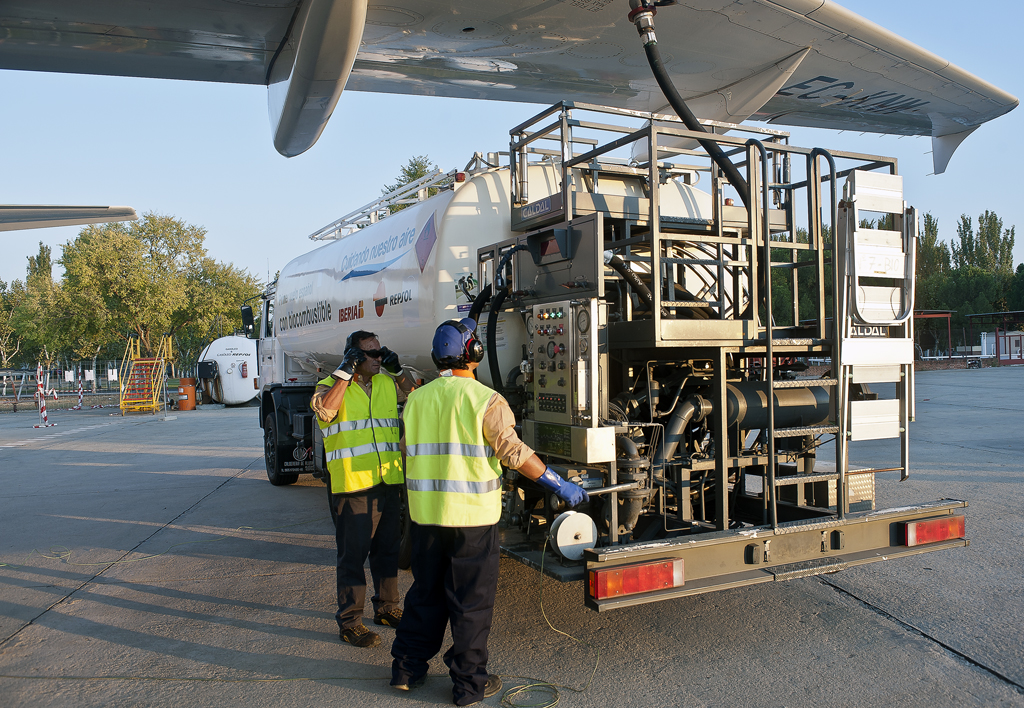Economic Diversification; Infrastructure Development; Human Capital Development; and Sustainable Development. (goals of Saudi Vision 2030)

In a press conference on 20th May 2024 Saudia, a group formerly known as Saudi Arabian Airlines Holding Corporation, announced an order of 105 Airbus A320neo family aircrafts. This order comprises 12 A320neo and 93 A321neo and increases the order backlog (of Saudia) of N321neo up to 144. The order came at a time when the group revealed its aviation goals of increasing flights to its 100+ destinations across 4 continents with plans of increasing seating capacity of its aircraft.
Saudia and Airbus mutually share their delight
An official, H.E. Engr. Ibrahim Al-Omar, Director General of Saudia Group, expressed the delight of the group when he commented:
“Saudia has ambitious operational objectives to meet its growing demand. The progress of Saudi Vision 2030 is attracting more visits, tourists, entrepreneurs, and pilgrims each year. This motivated our decision to secure this significant deal, which will create jobs, increase local content, and contribute to the national economy.”

Executive Vice President Sales of the Commercial Aircraft business of Airbus, Benoît de Saint-Exupéry, shared a buoyancy that was similar to that expressed by Ibrahim Al-Omar:
“The new additions of the A320neo family aircraft will play a vital role in contributing to Saudi Arabia’ ambitious Vision 2030 plan,” said. “It will enable Saudia Group’s strategy to advance the Kingdom’s aviation capabilities while enabling both airlines to benefit from the A320neo Family’s exceptional efficiency, superior economics, highest level of passenger comfort as well as lower fuel-burn and emissions.”
A320 Additions to Support Saudi’s (Sustainable) Aviation Goals
Airlines and passengers will benefit from the A320neo family’s exceptional efficiency, superior economics, and high level of passenger comfort. This family line is also popular for its environmental sustainability as the aircraft is known for a lower fuel-burn mechanism and thus has lower carbon emissions compared to other aircraft in its type.
Some of the notable points, as highlighted by Airbus, regarding the lower emissions of the A321 Neo include the following:
“The availability of two advanced engine choices – CFM International’s LEAP-1A and Pratt & Whitney’s PurePower PW1100G-JM geared turbofan, along with Airbus’ fuel-saving Sharklet™ wingtip devices. Together, they bring per-seat fuel improvements of 20%, along with an additional range of up to 500nm or two tonnes of extra payload.”

A prototype of the A321neo
The aerospace technology giant also explains the improvements in the aircraft that make such lower emissions possible:
“Aerodynamic-enhancing Sharklets on the wings and its fuel-efficient engines ensure outstanding environmental performance with 30% lower fuel burn per seat and a noise footprint that is 50% lower for passengers and airports.”
Airbus further claims some numbers for the A320 family that bolster their case of Carbon footprint reduction:
- the entire A320 Family is already able to operate with up to 50% Sustainable Aviation Fuel (SAF)
- Airbus aims for all its aircraft to be capable of operating with up to 100% SAF by 2030.
- the A321neo brings a 50% noise reduction and at least 20% fuel savings and CO2 reduction compared to previous-generation single-aisle aircraft
The A320neo family is one of the best-selling aircraft families from Airbus and covers great distances of up to 4700 nm, which is perfect for the operational demands of Saudia, as the A320neo can perform intercontinental and transcontinental flights.

Sustainability has been at the heart of the aviation industry which is why a lot of airlines are shifting towards operations with biofuel. This is the picture of an Airbus A320 being refueled with biofuel in 2011.
Alan Dron, in Times Aerospace, reports that Saudi Arabia aspires to increase the number of passengers to 330 million by the end of the decade when the figure was over 100 million in 2019. Though one cannot hope to accommodate the millions of expected travelers on A320neo and A321neo alone, the cabin length ranging from 37.57 to 44.51m that can accommodate up to 244 people is one type of the many aircraft that the nation will need.
Influence of Aviation on Saudi’s GDP
Aviation industry, commercial and cargo collectively, are estimated to support US $20.2 of the GDP in Saudi Arabia. The GDP plummets up to 36.5 billion from the income earned from expenditures incurred by foreign tourists.
IATA, International Air Transport Aviation, forecasts under the “current trend” scenario, if met, the increased demands would support approximately US$ 82.3 billion and almost 1.2 million jobs in Saudi Arabia.
Expansion Plans of Saudi
The nation of Saudi Arabia prepares itself for the future as a vibrant and ambitious society with a thriving economy. Moreover, the country is on the journey of diverting its predominantly oil-export-based economy to other sectors. These ‘sectors’ include health, tourism; domestic and international, and many more. Saudi Arabia has plans to lure millions of passengers to the country by 2030. And aviation will be the great pillar on which the nation will be hedging its bets of attracting such a voluminous number of tourists.
